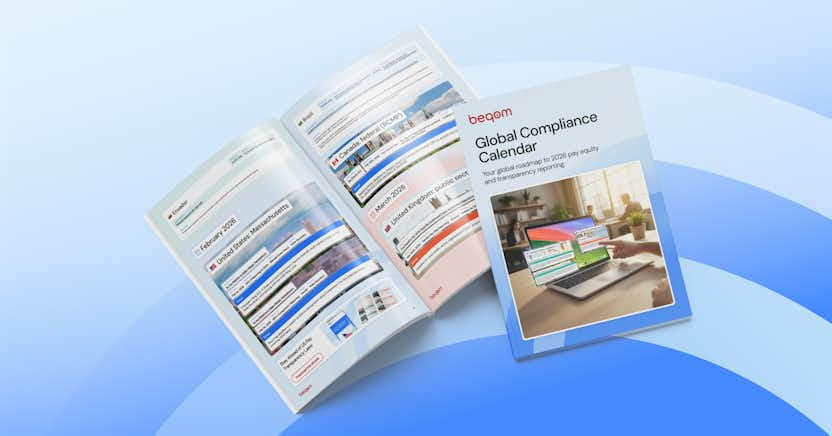Removing the Roadblocks to a High-Performance Culture

Learn more about the following beqom products
A high-performing organizational culture is one of the keys to success. As Peter Drucker has said, “Culture eats strategy for breakfast.” Culture is also the key to personal happiness and well-being at work.
But, for many companies, two large obstacles currently stand in the way of achieving a high-performing culture: challenging market conditions, and limitations imposed by outdated practices and technologies.
Technology that is based on a new employee-centric model can provide the answers and help you move your business to the next level.
In this blog, we look at the impacts of these challenges on performance to help understand why our current model and technologies are not working, and why we need new approaches if we want to remove the roadblocks to a high-performance culture.
We all surely want to promote a high-performing culture in our organizations, and this is one of the fundamental priorities of any rewards program or performance management model.
From a compensation perspective, we know that our culture must include making sure our employees are rewarded for their hard work and that our pay scale enables us to recruit and retain talent. We also know it requires fairness and transparency because without those we won’t retain good people and will struggle to recruit.
From a performance management perspective, our performance processes have a lot to do with reinforcing the corporate culture, for better or for worse, by establishing a communication channel and setting the tone for what the company values and how it operates.
A challenging external environment
For one, the external market environment has changed. That is abundantly clear to anyone who hasn’t been living under a rock. In addition to the usual recruiting and retention challenges, companies are now facing:
- Inflation and economic uncertainty
- Competition for talent
- Remote and dispersed workplaces
- Pressure to link pay to performance
- Need for transparency & pay equity
Economic conditions, Economic factors clearly are affecting employee satisfaction and well-being. A recent Mercer study called “rethinking what we need from work” surveyed employee needs and found that “covering monthly expenses” went from the 9th biggest concern in 2021 to the largest concern in 2022, for US employees. The question was, “What’s keeping you up at night?” You can’t create a high-performing culture if your employees are worried about paying their mortgages.
Intense competition. However, Mercer also maintains that it’s not just inflation in the cost of living that’s driving upward pressure on pay, it’s the competition for talent. You also can’t create a high-performing culture if your employees are leaving for your competitors.
Remote work. Adding to the tidal wave of change, remote and hybrid work have made some benefits obsolete, while creating opportunities for new reward models, not to mention necessitating new performance management approaches.
New regulations. And finally, on the external front, there’s the evolving legal and compliance environment. Attempts to link pay to performance are as old as pay itself, but new regulations that require disclosures around that linkage, along with continuing demands for pay equity, add pressure to the need to measure performance and provide pay transparency.
So how do you keep employees excited about working for your company, especially if you can’t just raise wages across the board? How can your rewards program help to build or improve your high-performance culture?
Replacing outdated performance and reward processes
HR needs updating. The second major problem with getting to a high-performance culture is that internal pay practices haven’t fundamentally changed in decades, and HR technology is not responding fast enough to the changing needs of organizations. The economic and workplace factors mentioned above, combined with the changing demographics of the workforce, call for new approaches to performance and rewards management.
Worker needs are changing. Attracting talent in today’s environment requires flexibility in compensation and benefits. beqom’s 2022 Compensation and Culture Report: Rethinking Pay Strategies for a Changing Workplace, gave insight into what job seekers and employees want and need from employers in terms of compensation. Our 2023 Leveling the Paying Field Report showed that employees also increasingly value fairness and transparency in compensation. The challenge is, how can employers make workers happy when everyone has different needs?
HR standardization can be limiting. Companies have largely standardized their HR processes using Human Capital Management (HCM) suites, which is a good thing. However, that standardization can also be limiting when it comes to managing rewards. Most HR suites that manage compensation require a one-size-fits-all approach in one or all compensation processes, which necessarily limits an organization’s ability to meet today’s demands for a flexible rewards approach.
Rewards agility is needed. Companies increasingly need agility in how and when they deliver rewards, including the ability to deliver tailored rewards, maybe even one-to-one compensation, using an agile rewards platform that can adapt to change easily.
A new model for performance and pay
Technology that is based on a new employee-centric model can provide the answers. In future blogs we will explore how you can use continuous performance management, combined with continuous total rewards, to move your business to the next level.
For more about how you can use technology to remove the roadblocks to a high-performance culture, continue to follow our blog and download our free eguide, Rewarding the Moments that Matter: How to Build a High-Performance Culture.








